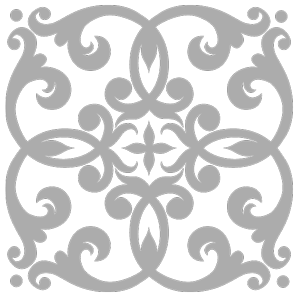Hubbard is called Founder by his adherents. This coincides with an important distinction made in comparative studies between “founded” and “ethnic” religions. The former trace their origins from some person even when he himself did not think to have founded it (Jesus, Confucius, Lao Tse). The latter do not have any names to be remembered, but oral ethnic traditions instead. A necessary process in the building process of any founded religion takes place when an inner circle of adherents appears who gather around their master and are ready to follow him. When several individuals decided to establish the Church of Scientology in 1954, L. Ron Hubbard naturally became its spiritual leader. After having decided to retire from his duties as the director of the growing Church the status of the Founder became legendary as time went on.
The often critical moment which follows the physical death of a founder of a religion was not very problematical in the history of Scientology because Hubbard had given up his formal functions as the leader of his Church during his life. Already before he passed away in 1986, the Founder had become venerated and a room in each Church of Scientology around the world had been dedicated to him. Whatever way it may have happened, this kind of process, in a religio‑phenomenological comparison, has been revealed to be one of the essentials in the formation of any older or newer religion which regards itself as having been founded by someone.
Although Scientology churches, missions and other centers and headquarters indicate the symbols of a working social milieu, they always include a place of worship, a sacred space for weekly devotion and family ceremonies. The spirit of the Founder, which according to Scientology Scriptures about human survival is present even after “L. Ron Hubbard left his body” at his death in 1986, is expressed by plenty of his books and pictures.
The Church of Scientology has its own mythology related to the life and the teachings of its Founder. It also has its own annual memorial calender commemorating the anniversaries in the life of the Founder and the history of the Church.
The Sea Organization (or Sea Org) is a special order which was founded in 1967 when Mr. Hubbard decided to retire from his office as the Executive Director of the Church to concentrate on his literary work onboard a ship. Those who then were first to follow him became the nuclear group of the newly established religion. As time went on this group became a mythical model to be observed and respected as the core of the most devout members of the Church. All members of the Sea Organization work full‑time for the religion by serving on staff of the higher level Churches. Evidence of their dedication is the contract of employment in the Sea Organization “for the next billion years.”
This kind of religious order in many respects reminds one of the circles of disciples who gathered around such founders of world religions as Jesus or Muhammed or the monastic order of the monks around Prince Gautama when he became Buddha. It is a very specific manifestation of religious mythology and symbolism. As such it is one of the criteria upon which we base our conclusion that Scientology is a new religion.
It is typical for members of the Church’s religious order that they together form a kind of extended family devoting most of their time to their work for and in the Church, and at the same time taking care of each others’ daily and economic needs, even their children. This kind of life style is so comprehensive that members of the Sea Organization usually establish families among themselves. The common sailor’s uniform worn by the Sea Organization members is an important unifying factor on both emotional and social levels.
The majority of Church members are parishioners who take part in auditing, courses and other offerings of the Church of Scientology, but live and work outside the Church. They come from all walks of life. They are part of the local Scientology congregation and religious community and in varying degrees orient their lives around Scientology as their religion. They live by Scientology ethics codes and standards, apply the principles and methods of Scientology in their lives and raise their children to live and act as Scientologists.
Mythically, this spiritual connection in Scientology teachings trespasses the normal boundaries of human existence. Instead of reincarnation, taught by, for example, Hinduism and Buddhism, Scientology has developed a special doctrine of “past lives.” Scientologists may tell about their former lives, for example during auditing when moving to the states of Clear and Operating Thetan, the harmony of mind reached as the final step in Scientology’s path to spiritual enlightenment‑reminding one of Buddhist enlightenment.
The Church of Scientology ordains ministers after they have undergone a specific course of minister education. The trained and ordained ministers, both women and men, take care of the rituals according to the ritual handbooks. The important sacred acts cover both the procedures related to the weekly Sunday church service and the “rites de passage” dealing with the key moments of the human life cycle. The Church of Scientology has been precise in this matter creating several models for name giving, weddings and burial ceremonies with exemplary sermons given by the Founder.





























